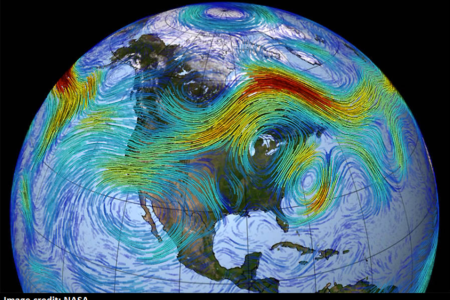November 26, 2019 – In the election last month in Canada the majority of Canadians voted for political parties that saw action on climate change as paramount. The country, however, is a laggard to-date in its efforts to mitigate climate risk and it is becoming more apparent that humans will be forced to adapt to a much warmer and less predictable world in the coming decades and centuries.
Canada isn’t alone in not meeting its Paris COP 21 commitments agreed to in 2015. Collectively, with few exceptions, the governments and companies on this planet are failing. So although Canadians voted to deal with climate change, it is pretty clear that we are not even close to meeting the agreed-to objectives to reduce greenhouse gas (GHG) emissions by 30% by 2030. Even that goal, set by a previous Conservative government, is deemed to be too weak a response to climate change. And we cannot, based on present policies and actions, hope to achieve it.
The United Nations, in issuing its 2019 Emissions Gap Report, is brutally honest about the current path humanity is taking to address GHGs. Here are some of its findings:
- GHG emissions continue to rise by 1.5% annually over the last ten years with no sign of peaking before 2030.
- Carbon dioxide (CO2) emissions from fossil fuels grew 2.0% in 2018.
- Emissions need to be 25 to 55% lower than in 2018 by 2030 to limit warming to a mean increase of 2.0 Celsius (3.6 Fahrenheit) and 1.5 Celsius (2.4 Fahrenheit) respectively.
From where we are now you cannot easily get to either the 25 or 55% GHG drop.
So which nations are the biggest contributors to GHG emissions? The members of the G20 (of which Canada is one) are responsible for 78% of the total. And it is their lack of due diligence in enacting carbon emission reduction policies that are widening the gap rather than closing it.
So what’s needed? Overachievement to redress the growing gap.
In particular, one paragraph in the Emissions Gap Report stands out. It states:
“Had serious climate action begun in 2010, the cuts required per year to meet the projected emissions levels for 2°C and 1.5°C would only have been 0.7%and 3.3% per year on average. However, since this did not happen, the required cuts in emissions are now 2.7% from 2020 for the 2°C goal and 7.6% per year on average for the 1.5°C goal. Evidently, greater cuts will be required the longer that action is delayed.”
What are the implications of annual emission cuts at the pace described above?
It means fundamental structural changes to the global economy with climate mitigation and adaptation investments becoming a precondition for all human activity going forward. It means an unprecedented transformation of our economies, companies, labour markets, infrastructure, habitation, governance, and societies.
It means profound changes in how we produce energy, food, and other materials necessary for human sustainability.
It means consumers need to get out of their comfort zones and recognize a need for new values, and norms based on sustainability.
It means a massive effort for social cohesion to achieve transformative change that leaves no one out, and overcomes resistance to necessary climate mitigation and adaptation.
The things we consume have to change. How?
- Renewable energy for electricity needs to be expanded exponentially.
- Coal for energy production needs to end.
- Energy-intensive industries need to decarbonize.
- Transportation needs to be decarbonized.
- Materials production needs to be decarbonized.
- Recycling of materials needs to be adopted globally to reduce the need to produce emission-intensive new materials.
Transition at this scale will be challenging and will be resisted by the fossil fuel, transportation, construction, mining, and manufacturing sectors. No one wants to be the first in an industry to go broke while others are laggards and continue to profit.
But we do have technological and economic developments that are presenting decarbonizing opportunities including:
- The energy sector is building renewable capacity at an astonishing rate but still not fast enough. So industry and governments need to put the pedal to the metal and grow this source of energy exponentially.
- Governments and businesses, today, better understand the relationship between climate action, economic growth, and development objectives.
- Social license to act is being driven by non-state actors, and by a growing segment of youth (Greta Thunberg and her school climate strikes) who are committed to seeing GHG reductions and sustainability as the primary goals for government and society going forward.
In the latest United Nations scorecard on how humanity is doing collectively to address the climate crisis, the Developing World is putting the Developed World to shame. Seventy-five of 112 Developing World nations are leading by example through the curbing of GHG emissions. But they collectively represent only 37% of total global emissions. So it is the remaining 63% that need a kick in the pants to meet and exceed their Paris COP 21 commitments. One of those is Canada.
The newly re-elected Liberal government in Ottawa and several parties in opposition are committed to a net-zero emissions goal by 2050. It is ambitious and set 30 years in the future. It would, however, be far more comforting to know that the 2030 goal of a 30% GHG emissions drop can be met or exceeded through actions being taken now.
If you are a parent reading this posting, know that it is the children of “Generation Z” who will bear the brunt of the ongoing climate crisis.
A child born today will live in a world with mean temperatures, 3 Celsius (5.4 Fahrenheit) higher than before the onset of the Industrial Revolution. In Canada, where mean global temperature rise goes double, that translates based on current trends to temperatures 6 Celsius (10.8 Fahrenheit) higher than today. What that will do to our cities, to our farms, to our wildlife, and to our way of life will be profoundly disturbing.









